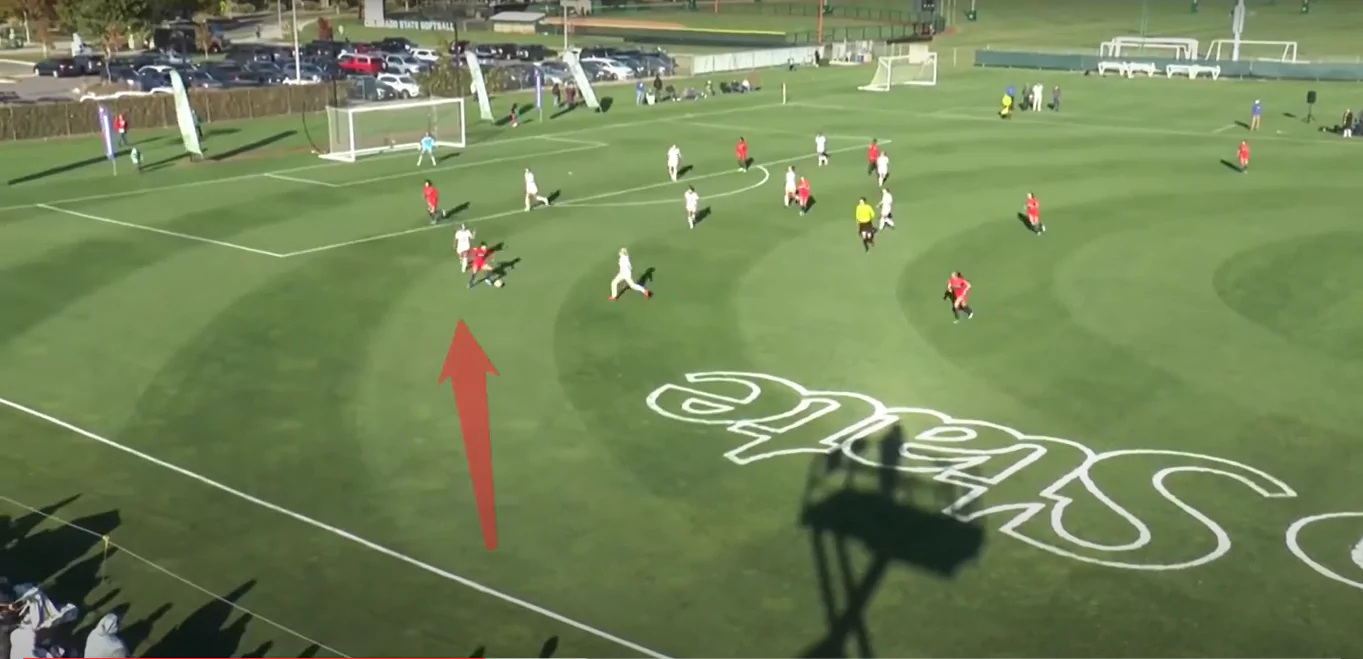
Find Your Perfect Fit: The Different College Tennis Levels in the USA
Understanding the Different College Divisions and How to Match Your Skill Level with the Right Tennis Programmes
Jasmin Hauska from Germany is a former college tennis player in the USA. She was recruited by a coach and awarded a tennis scholarship at Southwestern College. In this article, Jasmin explains the level of college tennis in the USA, how to find a programme that matches your level of play, and what makes tennis at college something truly unique!
Finding the Perfect College Tennis Level
I would like to begin this article by clearing up a common misconception about college tennis or sports in the US in general. Although the format has a highly competitive spirit, you do not need to be a professional by any means.
Before I came to university, I had a great deal of respect for the process. I was always wondering whether I would be good enough. Personally, I prioritised other sports when I was younger and didn’t really focus on tennis until the age of 14. Therefore, my perception of university tennis in America being only for top players didn’t help my confidence when I was going through the process with Keystone Sports.
However, the further I progressed, the more I realised my worries were unfounded. I was pleasantly surprised when I received offers from across the US. They weren’t Division 1 schools, but they matched my level of play, which brings me to the next point.
The Different College Tennis Divisions
Many recruits don’t realise there are multiple levels depending on the association and division of the university they end up attending. In the US, there are two separate governing bodies for university athletics: the National Collegiate Athletic Association (NCAA) and the National Association of Intercollegiate Athletics (NAIA).
While the larger NCAA has three divisions (D1, D2, and D3), the lesser-known NAIA operates with only one division, which is why it can be difficult to compare the two. There are NAIA schools that can compete with the top NCAA D1 schools, where most professional athletes play, and others whose level is lower.

Understanding the Level of Play in College Tennis
To get a good sense of the actual level of play, regardless of association or division, I would always recommend looking at the roster, individual Universal Tennis Rankings (UTR), and the results of matches played. This makes it easier to see if your level aligns with the university you’re interested in.
If you’re doubting whether you’re good enough (as I did), this could also help relieve some pressure. Don’t hesitate to communicate openly with the coach and ask for practice or match recordings. Since college tennis in the USA is quite different from what international players are used to, it’s completely acceptable to do so.
What Distinguishes College Tennis in the US from Regular Tennis
When it comes to tennis in the United States, I would like to mention a few things that might be different. Firstly, the format. Typically, there are two separate seasons. During the autumn, the focus is on individual singles and doubles tournaments, while the spring season is all about the team. This is when all pre-season and conference matches take place (including playoffs to qualify for the national team championships at the end), which makes the spring term the busier of the two.
Playing a few matches a week on top of practising every day and strength and conditioning sessions, it can become quite demanding alongside your studies and any part-time work. Therefore, it’s really important to stay organised and keep your priorities clear. Planning and effective time management are essential to success at university.
Finally, I’d like to highlight the unique team spirit in the US. The support you receive from your teammates, coaches, and the wider university community is unlike anything else! Hearing them cheer and shout from across multiple courts is not something we are used to. University tennis is loud, fun, and far from being a quiet, individual sport. Experiencing it for yourself is incredibly rewarding, no matter your level.
Are you ready to begin your journey towards becoming a college tennis player? Keystone Sports are experts in helping players study and play tennis in the US with the help of scholarships. Get a free evaluation of your tennis scholarship opportunities by completing our assessment!
Share this article:

About the author
Paulina Romo
Paulina Romo, SEO Manager at Keystone Sports, holds a Master’s degree in Business Administration and has a background in equestrian sports, specializing in dressage. Shaped by international experience gained from work and studies in Sweden, South Korea, Germany, and Spain, Paulina brings a diverse blend of marketing skills and perspectives to her role.
More related articles

“My tennis showcase experience”
Are you dreaming of playing tennis in the USA and obtaining a tennis scholarship? Attending a college showcase is an excellent step on the way! Read about graduated tennis student-athlete Jasmin Hauska’s firsthand experience of attending Keystone Sports’ tennis showcase.

Top Questions to Ask a College Coach During the Recruitment Process
One important step on the journey towards a sports scholarship is meeting with coaches who are interested in recruiting you for their university teams. But what are some good questions to ask during these meetings?

How to Make a Recruiting Video
Learn how to create a college recruiting video that catches the attention of US university coaches! Get tips from Keystone Sports ambassador Olivia, who secured a football scholarship and now studies and plays football in America.



